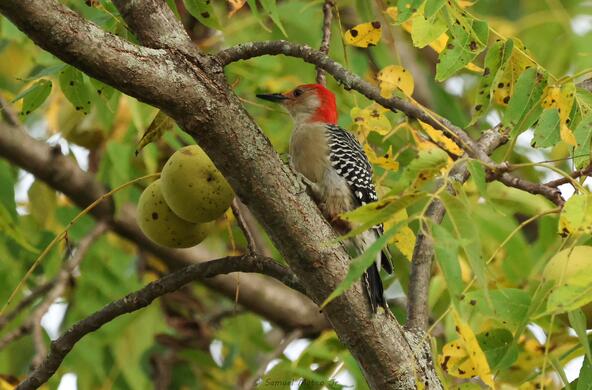One of the iconic theories in ecology, which has withstood decades of rigorous experimental tests, is the Theory of Island Biogeography developed by Robert MacArthur and E.O. Wilson in the 1960s. They found that the number of species on islands showed a direct correlation to the size of the island and its proximity to an adjacent mainland area. Close proximity ensured that a large number of individuals of various species would find the island, whereas size ensured that there was ample available and favorable habitat to allow immigrating populations to persist.
Conservation biologists quickly recognized that this theory had immediate application to the design of refuge areas for wildlife. Protected areas are analogous to islands, inasmuch as they are often surrounded by a “sea” of inappropriate habitat, such as agriculture, roads, suburbs, and shopping centers. As a first approximation, a large protected area will preserve more species than a small one.
Tom Lovejoy has tested the theory in the Amazon basin, where fragments of intact rainforest of differing size were maintained as the surrounding rainforest was logged. Losses of bird species were greatest from the smaller habitats. One study in Thailand found that nearly half of the species of small mammals disappeared from small fragments of preserved habitat within 14 years of isolation.
Small protected areas are often the most vulnerable to invasions of exotic species and to human encroachment along their borders, behooving us to increase the size of refuges so as to minimize their ratio of perimeter to area. In one area of the Amazon, rainforests lost 36 percent of their plant biomass within 100 meters of the border within a couple of decades of isolation. The interior of these areas was unaffected. Minimizing the length of border while maximizing the area has a lot of advantages.
Ecologists have also noted that even small islands of habitat are more effective at species preservation if they are connected to one another by corridors that allow the individuals of species to move between habitat fragments. Local extirpations of a species on one protected area can be replaced by the immigration of replacement individuals from an adjacent area. Some have argued that corridors also allow the more rapid dispersal of exotic species, but experimental evidence generally shows that corridors are beneficial, particularly where the habitat is already fragmented.
Of course, the pattern of land use in the developed world was established before anyone gave much thought to species preservation. Today, fragments of protected habitat of varying size are found at varying distances from one another. One might ask if anything can be done to maximize species preservation and ecological value of such habitat. In many cases the answer is yes. First, acquisition of new protected lands can often be prioritized so that they connect existing refuges and reduce the ratio of perimeter to protected area. Second, even if available tracts are not large, if they can be arranged to provide corridors for the movement of wildlife between existing protected lands, the overall number of species preserved is likely to be greater.
Bibliography
Belote, R.T. and 7 others. 2017. Wild, connected, and diverse: Building a more resilient system of protected areas. Ecological Applications 27: 1050-1056.
Ferraz, G., G.J. Russell, P.C. Stouffer, R.O. Bierregaard, S.L. Pimm, and T.E. Lovejoy. 2003. Rates of species loss from Amazonian forest fragments. Proceedings of the National Academy of Science 100: 14069-14073
Gibson, L., A.J. Lynam, C.J.A. Bradshaw, F. He, D.P. Bickford, D.S. Woodruff, S. Bumrungri, and W.F. Laurance. 2013. Near-complete extinction of native small mammal fauna 25 years after forest fragmentation. Science 341: 1508-1510.
Haddad, N.M., L.A. Brudvig, E. I. Damschen, D.M. Evans, B.L. Johnson, D.J. Levey, J.L. Orrock, J. Resasco, L.L. Sullivan, and J.J. Tewksbury. 2014. Potential negative ecological effects of corridors. Conservation Biology 28: 1178-1187.
Laurance, W.F., S.G. Laurance, L.V. Ferreira, J.M. Rankin-de-Merona, C. Gascon and T.E. Lovejoy. 1997. Biomass collapse in Amazonia forest fragments. Science 278: 1117-1118.
MacArthur, R.A. and E.O. Wilson. 1967. The Theory of Island Biogeography. Princeton University Press.
Robinson, S.K., F.R. Thompson, T.M. Donovan, D.R. Whitehead, and J. Faaborg. 1995. Regional forest fragmentation and the nesting success of migratory birds. Science 267: 1987-1990.
Simberloff, D.S. and L.G. Abele. 1976. Land biogeography theory and conservation practice. Science 191: 285-286.
Simberloff, D. 1988. The contribution of population and community biology to conservation science. Annual Review of Ecology and Systematics 19: 473-511.
Terborgh, J. and 10 others 2001. Ecological meltdown in predator-free forest fragments. Science 294: 1923-1926.
Tewksbury, J.J., D.J. Levey, N.M. Haddad, S. Sargent, J.L. Orrock, A. Weldon, B.J. Danielson, J. Brinkerhoff, E.I. Damschen and P. Townsend. 2002. Corridors affect plants, animals, and their interactions in fragmented landscapes. Proceedings of the National Academy of Sciences 99: 12923-12926.
Woodroffe, R. and J.R. Ginsberg. 1998. Edge effects and the extinction of populations inside protected areas. Science 280: 2126-2128.







